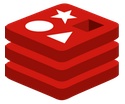Moved to Postgres 17
Friday, May 9th, 2025
This morning I noticed that not only was Postgres 17 out, they had released 17.5. I try to keep up to the latest major version, and I seem to be slipping in recent days, and I needed to correct that this morning. 🙂
So based on the steps to move to 16, start by saving everything in all the databases:
$ pg_dumpall > dump.sql $ brew services stop postgresql@16
Now we can wipe out the old install and it's data:
$ brew uninstall postgresql@16 $ rm -rf /opt/homebrew/var/postgresql@16
Now we install the new version, start it, and load back up the data:
$ brew install postgresql@17 $ brew services start postgresql@17 $ brew link postgresql@17 $ psql -d postgres -f dump.sql $ psql -l
At this point, it's all loaded up and you can ditch the dump.sql file, as it's no longer needed, and the new version is active:
$ psql --version psql (PostgreSQL) 17.5 (Homebrew)
Excellent. 🙂
As a minor point, I fired up my Clojure code, and it hit the database perfectly. The dump and load worked, the JDBC calls worked, and everything was great.





